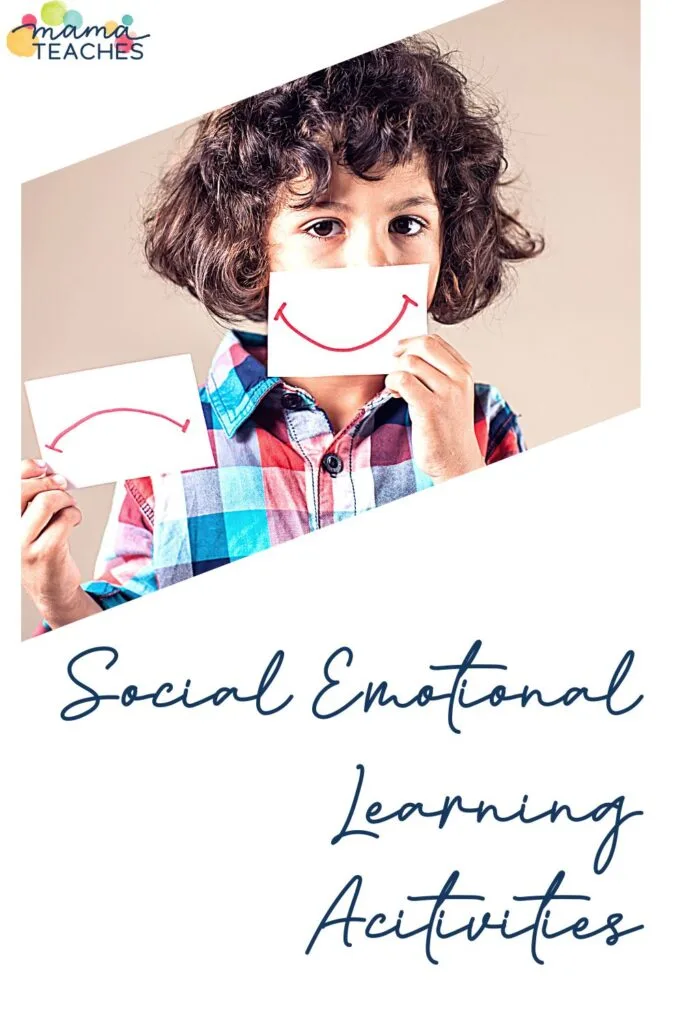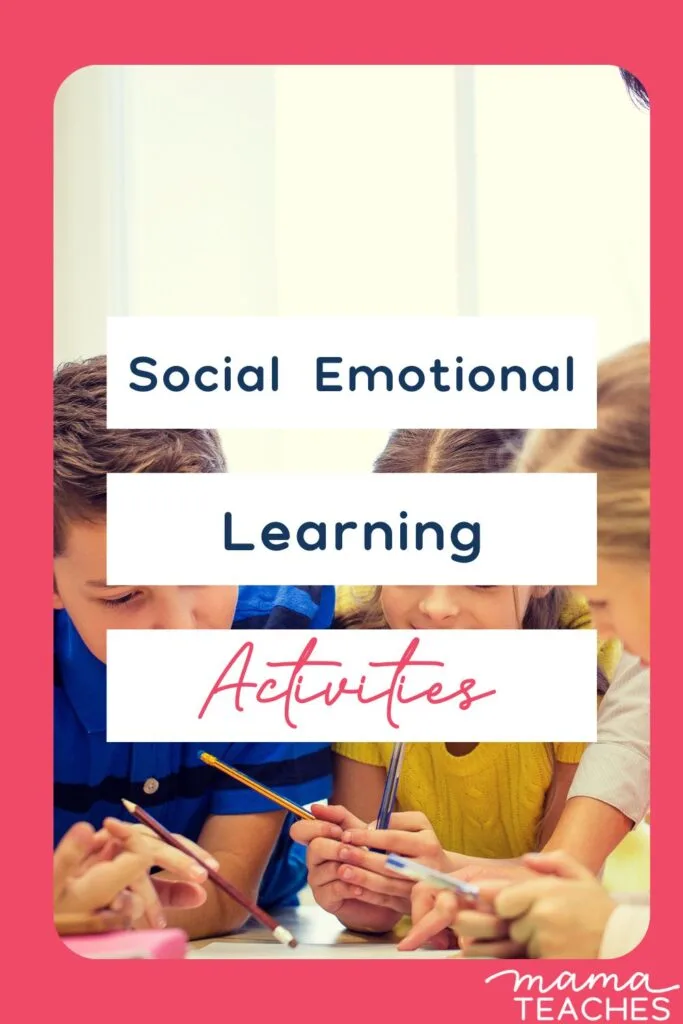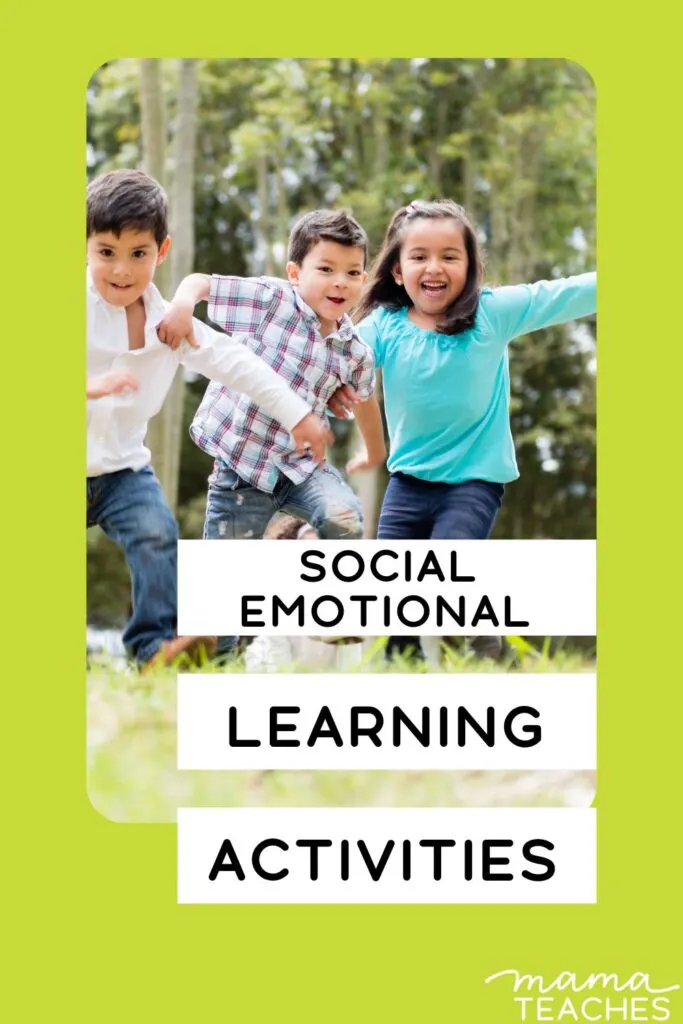Social-emotional skills are vital.
How do you teach them to kids?
You use engaging SEL activities, of course!

This article contains affiliate links to things that you might like.
What Is Social Emotional Learning?
Social emotional learning (SEL) is just what the name implies.
It involves learning social skills such as how to form positive, supportive relationships with friends and family and how to develop empathy.
It also includes learning to follow directions and make responsible decisions.
Emotional skills are another component of social emotional learning.
A child must learn about emotions and how to recognize his emotional state.
Next comes figuring out how to manage those emotions; this includes coping skills and ways to manage stress.
The last part of SEL involves developing a healthy sense of self.
When you have a positive outlook on who you are, it is easier to manage your emotions and connect with those around you.

Social Emotional Activities to Try in the Classroom or Homeschool
When you use these social emotional learning activities intentionally and incrementally, you can help your students advance in their social emotional skills.
Following Directions: Play Games
Games are a great way to practice following directions (an SEL skill).
You can begin these games with young children: “Simon Says,” “Red Light, Green Light,” and “Follow the Leader” are classic examples.
As children mature, you can play board games to practice following a set of rules.
Decision Making: Organization
Organizing a space requires making a series of decisions.
What are the categories of objects?
How can you group them?
In what order should you complete the activity?
Use conversation starters to strategize how to organize a space (like a shelf of books or a bin of supplies).
For example, ask, “What are the sizes of these books?” or “Do we have more small or large books?” By engaging with the students, you can break a large task into discreet steps and lead the children to make wise decisions.
Once you have worked out a plan, let them organize!

Develop a Positive Sense of Self: Journal Words, Sentences, and Pictures
It is far easier to see your faults than your gifts.
Have children journal about the positive.
This can include prompts about the student and prompts to notice the good in their lives.
Here are some suggestions:
- What activity do you enjoy?
- Who has helped you?
- How have you helped someone in the past week?
- Write down a compliment you have heard someone say about you.
- What is something you like about yourself?
- What is a strength you have?
- What is something that makes you happy?
Get in Growth Mindset: Hide and Seek the Quotes
No doubt you have worksheets and bulletin boards that proclaim growth mindset quotations.
You can play a game with these messages as well.
Write or print some growth mindset quotes and hide them around the room.
Have the kids find the quotations and take turns reading some aloud.
Boost Positive Relationships: Play Group Games
Widen your repertoire of community-building games.
These are games where children work as a team or get to know one another better.
Would You Rather Questions, Two Truths and a Lie, and Minute to Win It games fit this bill.

Manage Stress: Mindfulness Activities
Stress happens when you focus on your worries and pressures; mindfulness occurs when you slow down and focus on the present moment.
You can teach mindfulness by modeling deep breathing (through pinwheel breathing or starfish breathing) or going on nature walks.
Playing games that require you to notice what is around you (like “I Spy”) can also increase mindfulness.
You can even do stretches or yoga poses together.
Learn Empathy: Act Out Stories
Have a few volunteers pantomime a well-known story as you tell it or read it.
Pause the story at various points and ask the students, “How do you think [character’s name] is feeling?” For example, when you tell the story of Little Red Riding Hood, pause and ask how Red felt when she heard her grandma was sick or when she discovered it was really a wolf in her grandma’s bed.
Identify Feelings: Activities for Learning Emotions
If you teach young children, you will need to teach them about basic emotions.
You can do with this FREE make-your-own early reader.
If you have older students, you can teach the subtle variations of emotions labeled in the Mood Meter.
You can even have your students assemble a colorful Mood Meter for the wall in the classroom or homeschool.
It’s an art project that gives back by teaching kids to identify their moods!

Activities That Teach Social Emotional Skills
Social emotional learning activities can make a difference in your classroom or homeschool.
By teaching kids how to deal with stress, positively interact with others, and identify and manage their emotions, you are setting the stage for a happy school day and a healthy life.
